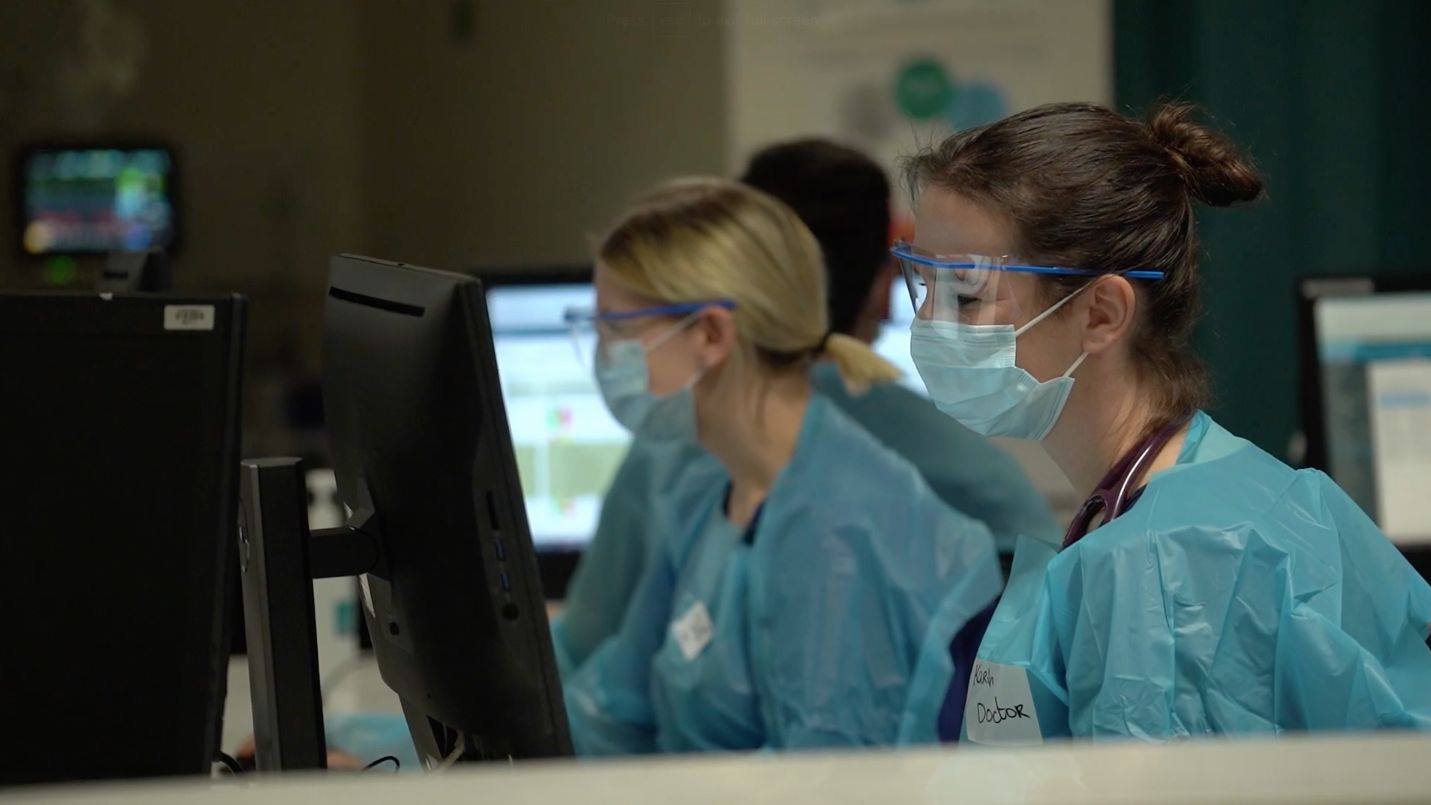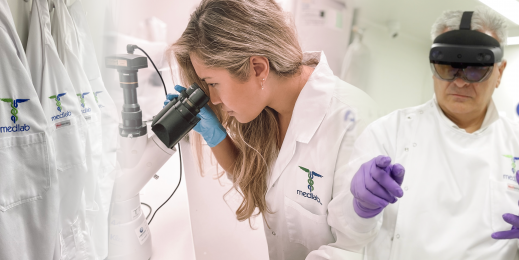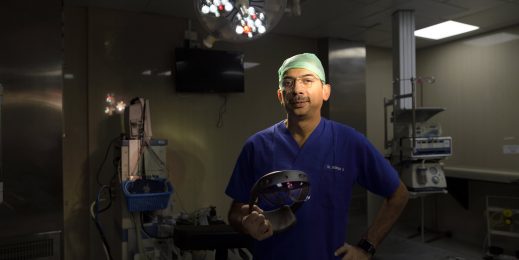
Austin Health powers up its people, accelerates innovation
Austin Health is one of Australia’s leading providers of health services. Melbourne based, the organisation has a 10,500-stong workforce serving one of the city’s fastest growing areas with a combined population of 350,000. It routinely handles more than 110,000 patient admissions each year.
To ensure efficiency and effectiveness Austin Health has increasingly turned to digital solutions to support both its personnel and the wider community. This for example meant that in the last financial year the number of telehealth consultations conducted by Austin Health clinicians rose 1,100 per cent.
Austin Health also rolled out 9,500 licences for Office 365 in two weeks to support new ways of working for all its people in response to the pandemic.
Among those people is a small team of patient services assistants (PSAs) who navigate the corridors of the hospital – getting patients to and from different locations. In the past PSAs would pick up a job by collecting a slip of paper from a central office which told them which patient had to be taken where and when.

Once one patient had been delivered, the PSA would return and collect another slip of paper, collect another patient and the whole process started over. It was a cumbersome process ripe for improvement according to Alan Pritchard, the hospital’s Director of EMR and ICT Services.
The challenge was particularly acute for the delivery of patients to the radiology department, who had started to explore digital alternatives to the manual system. They had got as far as working with LinkTech to develop a solution using Microsoft Teams, which was prototyping in just three months. While that was an advance on sending PSAs round the hospital with their slips of paper, it still had some limits.
By mid-2020 however Austin Health had rolled out Power Platform across the organisation, providing access to a low-code, no-code platform for applications development, and the development team thought this could be used to further streamline the way PSAs work.

“The development team did a little exploratory internal proof of concept using Power Apps and SQL on Azure. Then they reconfigured the proof of concept to be built on the Power Platform,” says Pritchard. The first prototype was ready in three days.
Pritchard says that by taking a platform approach to development it has been possible to develop applications with reusable components that can be brought to bear for other applications.
Austin Health was also able to use Power Apps to develop an app for nurses who were screening visitors coming into hospital during the pandemic. This allowed visitors lining up to enter the hospital to fill in a mobile form which the nurses could retrieve using a QR code, review the information, record the person’s temperature and then allow people through into the hospital if they were well.
While the IT team has developed these apps, Power Apps is also starting to be used in the service by a handful of clinician developers.
Staff Anaesthetist Dr Andrew Goldberg developed an application to help junior staff to contact senior staff after hours if they need to escalate Anaesthesia care for emergency surgery. Phone calls remain the most robust way to communicate with senior clinicians but calling through the switchboard can take time.
Using Power apps Dr Goldberg created an Anaesthesia Department phone directory that is published in the Anaesthetics Teams site and allows trainees to look up a department staff member and initiate a mobile phone call to anybody on the list, from within Teams. Goldberg says:
With limited coding knowledge I was able to create a working prototype in a couple of days, and provide our department with an extremely useful communication resource that is used every day.
In another part of the hospital, Sonographer Michael Huynh has digitised the log books used to record disinfection of ultrasound transducers. According to Huynh, “We have over 50 transducers in radiology which meant that we were required to have over 50 logbooks, 1 for each transducer. This was a major problem because in the event of an infection control breach it would be extremely difficult and time consuming to trace back all patients the transducers were used on.

“With the introduction of Microsoft 365 to the organisation, using PowerApps, I was able to quickly build an application to log the disinfection process of the transducer, with all the data stored on a single SharePoint list. In the event of a breach in infection control, traceability is as simple as filtering the SharePoint list by date, time, and transducers affected and then forwarding that list to infection control.”
Huynh says that the low code environment of PowerApps is putting control back into healthcare workers’ hands by allowing them to easily build applications that they need now, without needing to buy expensive software.
Prior to this, Huynh says he had no coding knowledge but “As I started experimenting and watching tutorials, I found the coding needed quickly started to make sense and now I’m starting to make more complex apps.”
According to Nic Woods, health industry executive, Microsoft Australia; “This is probably one of the first examples where a large hospital system has really used the capabilities of the Power Platform to solve some of those operational problems.”
The reusable nature of the Power Platform is allowing Austin Health to explore how it can create apps for other needs. For example, the PSAs’ radiology job allocation app is likely to be adapted so that it can be used to direct cleaning staff, and also extended for PSAs working in emergency. Pritchard states;
Power Platform and the Dynamics 365 platform together give us the capability to move in a consistent manner. It’s about reuse of tools and assets to provide consistent experience.
“What does it mean to the organisation? It gives us the capability to quickly solve a lot of small local problems. Then on the opposite end of the scale, as you start to move into slightly bigger and more complex pieces of work, we can build solutions on one consistent platform, with the same integration frameworks, same design patterns and same support capabilities, and without needing to go through big procurement exercises.
“One of the biggest costs in IT development is the time spent in the procurement process looking for an application to solve a problem, If you can get on with solving the problem on an existing platform, then you pull the business benefits forward. Time to develop solutions is important.”
Pritchard also notes the governance that Power Apps promotes. Instead of shadow IT solutions being bought by individual departments to solve their needs, there is now a growing desire to use Power Apps to tackle issues and build solutions, all the while surrounded by the security and privacy controls that the Microsoft platform brings with it.

“We’ve given them tools now, to build something using the assets that are already in our environment. It’s in our Microsoft tenant, and so we’ve got security and governance over it,” says Pritchard.
As Huynh noted “another great advantage to PowerApps is that I can assist for the most part and come to IT to get the finishing touches.”
It’s this powerful combination of flexibility and control that allows Austin Health to develop innovative solutions to operational challenges across the hospital – all within a secure, well managed environment.








